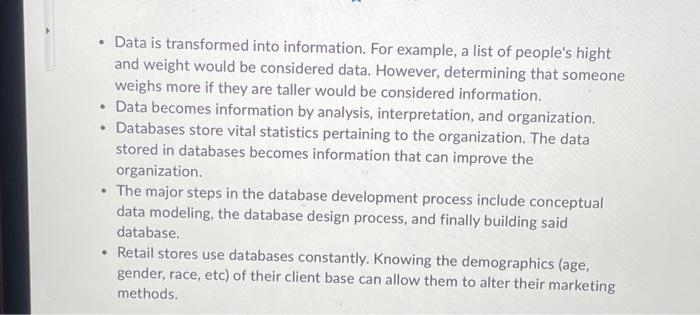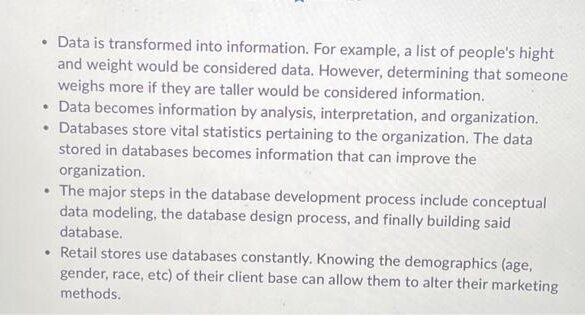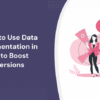Turning data into information is the crucial first step in extracting meaningful insights from raw data. This process isn’t just about collecting data; it’s about transforming it into something actionable. We’ll explore the nuances of this transformation, from defining the process to understanding the various tools and techniques involved, and examining real-world examples of how organizations leverage this knowledge.
This exploration will delve into the journey from raw data to actionable information. We’ll discuss the differences between data, information, and knowledge, highlighting the critical steps in converting raw data into useful information. Furthermore, we’ll analyze various data types, sources, and the crucial role of data quality in the entire process. This comprehensive look at data transformation will equip you with the knowledge to leverage data effectively.
Defining the Transformation
Turning raw data into actionable information is a crucial process in today’s data-driven world. Understanding the nuances of this transformation, from the initial data to the final insights, is vital for making informed decisions and achieving meaningful outcomes. This process isn’t just about collecting data; it’s about extracting value and using it effectively.The journey from raw data to actionable information involves more than simply organizing and presenting figures.
It requires careful analysis, interpretation, and context to create insights that lead to valuable decisions. It’s a process of refining and distilling information to make it meaningful and useful.
Data, Information, and Knowledge
Data, information, and knowledge represent distinct stages in the process of understanding and using information. Data are raw, unorganized facts and figures. Information is data that has been processed and organized to be meaningful and useful. Knowledge is information that has been contextualized and applied to make decisions and solve problems.
- Data are simply collections of facts and figures, without any inherent meaning or context. Examples include customer purchase history, website traffic statistics, or sensor readings.
- Information is derived from data through processing, organization, and analysis. It’s data presented in a structured format that conveys meaning and allows for interpretation. For example, analyzing website traffic data to identify peak hours or popular pages provides information. This information allows website administrators to optimize resources and improve user experience.
- Knowledge is the culmination of understanding and applying information to make decisions and solve problems. Knowledge involves insight, understanding, and wisdom, drawing on experience and judgment. For example, understanding that peak website traffic occurs during specific hours, coupled with knowledge of website limitations, allows for proactive measures to prevent website overload and maintain optimal performance.
Steps in Transforming Data into Information
The process of transforming raw data into actionable information involves several crucial steps. This is not a linear process, and the steps can overlap and iterate.
- Data Collection: Gathering raw data from various sources is the first step. This can include surveys, sensors, databases, or other data repositories. Proper collection methods ensure accuracy and relevance to the specific needs. The collection method must be well-defined and consistent to avoid biases or inaccuracies in the gathered data.
- Data Cleaning: Raw data is often messy, incomplete, or inconsistent. Cleaning involves removing errors, inconsistencies, and irrelevant data to ensure the quality and reliability of the data. Cleaning data involves removing duplicates, handling missing values, and correcting errors in the data.
- Data Transformation: This stage involves transforming data into a usable format. This may include aggregating data, converting data formats, or creating new variables from existing data. For example, converting raw sales data into monthly sales figures, or creating a new variable representing customer lifetime value.
- Data Analysis: Analyzing the transformed data to identify patterns, trends, and relationships. This step involves using statistical methods, data visualization tools, and other analytical techniques to gain insights from the data. Examples include using charts to show sales trends over time, or using statistical modeling to identify factors affecting customer churn.
- Information Presentation: Communicating the insights and conclusions drawn from the analysis in a clear, concise, and accessible manner. This often involves using data visualization techniques to represent the findings. Examples include dashboards, reports, presentations, or interactive visualizations to convey the information clearly and compellingly.
- Actionable Insights: This final step involves interpreting the presented information and formulating actionable strategies based on the analysis. This translates the insights into concrete steps that can be taken to improve processes, solve problems, or make decisions. For example, understanding that a particular product line is underperforming could lead to a decision to adjust pricing, marketing strategy, or product design.
Flowchart of the Data to Information Process
The following flowchart illustrates the process from raw data to actionable information, highlighting the key steps involved:
+-----------------+
| Raw Data |
+-----------------+
| Collection |
| |
+-----------------+
| Data Cleaning |
+-----------------+
| |
| Transformation |
| |
+-----------------+
| Data Analysis |
+-----------------+
| |
| Presentation |
| |
+-----------------+
| Actionable |
| Insights |
+-----------------+
Sources and Types of Data
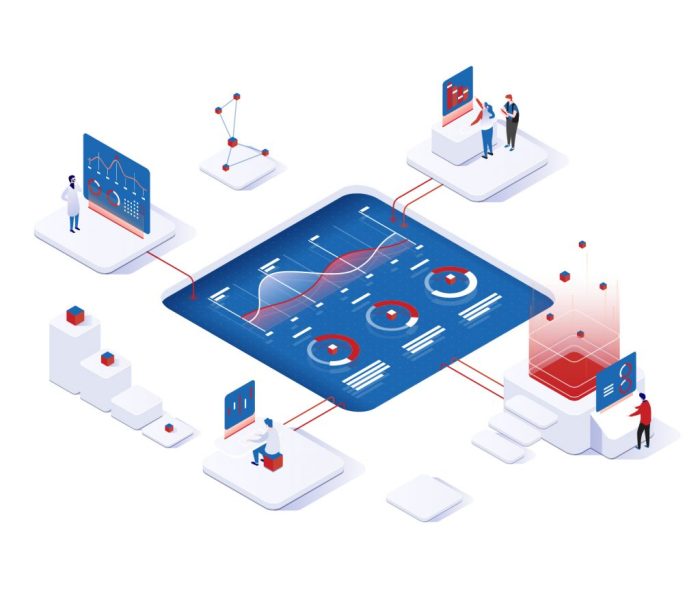
Turning raw data into actionable information is a crucial step in many fields.
Understanding the origins and nature of this data is fundamental to effective analysis and interpretation. Different data sources and types offer unique insights, and recognizing these distinctions is key to leveraging the full potential of the information derived.
Data, in its raw form, exists everywhere. Identifying the specific sources from which this data originates is vital to understanding its context and limitations. The quality of the information we extract depends heavily on the quality of the data we begin with.
Data Sources
Various sources contribute to the vast pool of data available for analysis. From traditional databases to social media interactions, each source offers a unique perspective and a specific set of characteristics. Understanding these differences is paramount to choosing the right data for a given task.
- Databases: Structured data, often stored in relational databases, provides a reliable and organized source of information. These databases contain detailed records, enabling precise querying and analysis.
- Sensors: Physical sensors capture real-time data from various environments. This data can range from temperature and pressure readings to GPS coordinates and traffic patterns, providing a dynamic view of processes and events.
- Social Media: Platforms like Twitter and Facebook offer a wealth of unstructured data, including user-generated content, interactions, and sentiments. This data can reveal trends, opinions, and public perceptions.
- Government Records: Government agencies maintain records on various aspects of society, such as demographics, economic indicators, and public health. These records can provide a comprehensive view of societal trends.
- Transaction Logs: Businesses often track transactions, purchases, and customer interactions. This detailed data can reveal insights into customer behavior, sales patterns, and operational efficiency.
Data Types
Data can be broadly categorized into three main types: structured, unstructured, and semi-structured. The structure of the data significantly influences how it’s processed and analyzed.
- Structured Data: This data type is highly organized and formatted in predefined schemas. Think of it as neatly arranged rows and columns in a spreadsheet. Databases are a common repository for structured data, allowing for easy querying and analysis.
- Unstructured Data: This data lacks a predefined format or structure. Examples include text documents, images, audio recordings, and videos. Analyzing this type of data requires specialized techniques like natural language processing or image recognition.
- Semi-structured Data: Semi-structured data lies between structured and unstructured data. It possesses some organizational elements but doesn’t adhere to a rigid schema. XML and JSON files are examples of semi-structured data.
Data Quality
Data quality is paramount in the transformation process. Inaccurate, incomplete, or inconsistent data will lead to misleading information. Ensuring data quality is a continuous effort requiring rigorous validation and verification procedures.
- Accuracy: Accurate data is essential for reliable insights. Errors and inconsistencies in the data can significantly impact the accuracy of the information generated.
- Completeness: Data must be complete and include all necessary information to generate a comprehensive understanding of the subject matter. Missing values can lead to incomplete or inaccurate conclusions.
- Consistency: Data should be consistent across different sources and formats. Inconsistent data can create confusion and hinder the effectiveness of the analysis.
Examples of Data Use, Turning data into information
Different data types are used in various ways to generate information.
Turning raw data into actionable information is key, but understanding your online marketing needs is just as important. Outsourcing tasks like SEO and social media management can free up your time to focus on the analysis and interpretation of data. Learning the right way to outsource online marketing can be the catalyst to transform that data into meaningful insights, ultimately driving your business forward.
This refined approach to data analysis is the real secret to success.
- Structured Data (Sales Data): Sales figures from a company’s database can be analyzed to identify trends in product sales, customer purchasing patterns, and overall revenue performance. This information can guide strategic decisions and optimize business operations.
- Unstructured Data (Customer Reviews): Analyzing customer reviews collected from various online platforms can reveal insights into customer satisfaction, product preferences, and areas for improvement. This information can inform product development, marketing strategies, and customer service initiatives.
- Semi-structured Data (Social Media Posts): Monitoring social media posts can identify trending topics, public sentiment towards a product or service, and potential crises. This information can be crucial for understanding public opinion and managing brand reputation.
Tools and Techniques
Turning raw data into actionable information requires a robust toolkit. This involves choosing the right tools for collecting, processing, and analyzing data, as well as understanding effective methods for transforming raw data into meaningful insights. Different tools and techniques are suited to different types of data and analytical needs. A critical aspect of this process is data visualization, which allows us to present complex information in a clear and understandable format.
Effective data transformation often involves a series of steps, from initial data collection to the final presentation of insights. This transformation is aided by specific technologies and methodologies that can be applied at various stages. Choosing the correct approach is essential for ensuring the accuracy and reliability of the final information derived from the data.
Data Collection Technologies
Data collection methods vary widely depending on the source and type of data. From web scraping to sensor networks, a range of technologies are used to gather data. For example, companies using social media monitoring tools can track customer sentiment and brand mentions, while organizations employing sensor networks can collect real-time environmental data. The choice of technology depends heavily on the specific data requirements and constraints.
- Databases: Relational databases, such as MySQL and PostgreSQL, are fundamental for structured data storage and retrieval. These databases provide efficient ways to organize and query data, supporting complex analytical operations.
- API Integrations: APIs allow seamless access to external data sources, enabling the integration of information from various platforms and systems. For example, APIs from social media platforms or financial data providers can be used to collect relevant data.
- Web Scraping: This technique extracts data from websites by automatically parsing HTML and other web page formats. Web scraping can be used to collect information from e-commerce sites, news articles, or other online resources. It is crucial to be mindful of website terms of service and robots.txt files to avoid legal issues.
Data Processing Techniques
Processing raw data often involves cleaning, transforming, and structuring it to make it suitable for analysis. This process can include handling missing values, removing duplicates, and converting data formats. The goal is to ensure data quality and consistency for accurate insights.
- Data Cleaning: Identifying and correcting errors, inconsistencies, and inaccuracies in data is essential. This may involve handling missing values by imputation or removal, or correcting errors in data entry.
- Data Transformation: Converting data from one format to another or applying mathematical functions to data points is crucial for analysis. Examples include aggregating data, normalizing values, or standardizing units.
- Data Integration: Combining data from multiple sources into a single, unified dataset is vital for comprehensive analysis. This requires careful consideration of data formats, schemas, and potential conflicts.
Data Analysis Tools
Various tools are available for analyzing data, each with strengths and weaknesses. Choosing the right tool depends on the type of analysis needed and the size of the dataset. Some tools are more suitable for statistical analysis, while others excel at machine learning tasks.
Turning raw data into actionable information is crucial, especially when it comes to understanding your customers. This involves a lot more than just crunching numbers; it’s about recognizing patterns and trends within the data. The power of customer marketing, for instance, relies heavily on interpreting data to tailor campaigns effectively power of customer marketing. Ultimately, transforming data into useful insights is key to boosting your business strategies and driving profitable growth.
| Tool | Strengths | Weaknesses |
|---|---|---|
| Microsoft Excel | Ease of use, wide availability, basic statistical functions | Limited capabilities for large datasets, not ideal for advanced analytics |
| Python (with libraries like Pandas, NumPy, Scikit-learn) | High flexibility, vast ecosystem of libraries, powerful for data manipulation and analysis | Steeper learning curve, requires programming knowledge |
| R | Excellent for statistical modeling and visualization, strong community support | Can be complex to learn, often requires a specific workflow for data analysis |
| Tableau | User-friendly interface, excellent for data visualization and storytelling | Limited for complex statistical analysis, may not be as flexible as Python or R |
Data Visualization Techniques
Visualizing data is a powerful way to communicate insights and trends. Different types of charts and graphs can be used to represent data in a clear and concise manner. Choosing the right visualization method is critical to conveying the intended message effectively.
- Charts: Bar charts, line charts, scatter plots, and pie charts are commonly used to represent different types of data. Bar charts are effective for comparing categorical data, while line charts can show trends over time.
- Graphs: Histograms and box plots can reveal the distribution of numerical data, while network graphs are useful for illustrating relationships between entities.
- Dashboards: Interactive dashboards provide a comprehensive view of key performance indicators (KPIs) and metrics. Dashboards can be used to track progress and identify areas for improvement.
Applications and Use Cases: Turning Data Into Information
Transforming raw data into actionable information is no longer a futuristic concept; it’s a crucial business strategy for success in today’s data-driven world. Organizations across diverse sectors are leveraging this process to gain a competitive edge, optimize operations, and make informed decisions. The examples below showcase how various industries are harnessing the power of data transformation.
Retail Industry Applications
Retailers are heavily reliant on data to understand customer preferences, optimize inventory management, and enhance marketing strategies. Analyzing sales data, website traffic, and customer feedback allows retailers to predict demand, personalize recommendations, and tailor marketing campaigns for maximum impact. For instance, a clothing retailer might use sales data to identify trending styles, predict inventory needs, and adjust pricing strategies accordingly, leading to increased profitability and customer satisfaction.
Healthcare Industry Applications
In healthcare, data transformation enables personalized patient care, disease prediction, and improved operational efficiency. Medical records, diagnostic imaging, and patient behavior data can be analyzed to identify potential health risks, personalize treatment plans, and enhance patient outcomes. For example, hospitals can use patient data to predict hospital readmission rates, enabling proactive interventions to reduce readmissions and improve patient well-being.
Financial Services Industry Applications
Financial institutions utilize data transformation to enhance risk management, fraud detection, and investment strategies. By analyzing transaction data, market trends, and customer behavior, financial institutions can identify potential risks, prevent fraudulent activities, and optimize investment portfolios. A bank, for example, might use transaction data to detect unusual patterns indicative of fraudulent activity, minimizing financial losses and safeguarding customer accounts.
Manufacturing Industry Applications
The manufacturing sector leverages data transformation to improve operational efficiency, predict equipment failures, and optimize production processes. Analyzing sensor data from machinery, production lines, and supply chains allows manufacturers to identify potential issues, proactively address maintenance needs, and enhance overall productivity. A manufacturing plant might use sensor data to predict equipment failures, scheduling preventative maintenance and minimizing downtime, ultimately reducing operational costs and increasing output.
Business Problems Addressed by Data Transformation
Data transformation is a powerful tool for addressing a wide range of business problems. These include optimizing pricing strategies, improving customer satisfaction, increasing operational efficiency, and enhancing decision-making. By providing insights into customer behavior, market trends, and operational data, organizations can make informed decisions that lead to significant improvements in profitability and performance. For instance, a company might use data to identify underperforming products and adjust pricing or marketing strategies to improve sales, leading to increased revenue.
Impact of Data-Driven Decision-Making on Business Outcomes
Data-driven decision-making significantly impacts business outcomes by enabling organizations to make informed choices based on objective insights rather than assumptions. This approach leads to better resource allocation, optimized processes, and enhanced customer experiences. Consequently, organizations experience improved profitability, increased efficiency, and enhanced customer satisfaction. The result is a stronger competitive position and sustainable growth in a dynamic business environment.
Challenges and Considerations
Turning raw data into actionable information is a complex process, fraught with potential pitfalls. While the methods and tools are readily available, navigating the intricacies of data security, governance, and skilled personnel is crucial for success. Ignoring these considerations can lead to inaccurate insights, wasted resources, and even reputational damage. Understanding the challenges inherent in data transformation is essential for building robust and reliable information systems.
Potential Obstacles in Data Transformation
Data transformation is not a simple process. Various obstacles can impede the successful conversion of data into meaningful information. Technical limitations, such as incompatible data formats or insufficient processing power, can create bottlenecks. Furthermore, inconsistencies in data quality, such as missing values or erroneous entries, can lead to inaccurate analysis. Finally, the sheer volume of data can overwhelm existing systems and require significant investment in infrastructure upgrades.
Data Security and Privacy
Protecting sensitive information is paramount in the data transformation process. Breaches can lead to significant financial losses, reputational damage, and legal ramifications. Implementing robust security measures, including encryption, access controls, and regular security audits, is crucial. Furthermore, adhering to data privacy regulations, such as GDPR or CCPA, is essential for compliance. These regulations dictate how personal data is collected, used, and protected.
Turning raw data into actionable information is key, right? But how do you ensure that marketing insights translate into concrete business strategies? That’s where management consulting comes in handy, especially when learning management consulting how to bridge the gap between your marketing and sales teams. Ultimately, the goal is still the same: using data to make smarter decisions.
Failure to comply can result in substantial penalties.
Data Governance for Quality
Data governance plays a vital role in ensuring the quality and integrity of the data used in the transformation process. A well-defined data governance framework establishes clear roles, responsibilities, and procedures for data management. This includes defining data ownership, establishing data quality standards, and implementing mechanisms for data validation and cleansing. A consistent and transparent approach to data governance is essential to ensure data accuracy and reliability, enabling informed decision-making.
Importance of Skilled Professionals
The successful transformation of data into actionable information relies heavily on skilled professionals. Data scientists, analysts, and engineers possess the expertise to design and implement the necessary processes and tools. They understand how to extract meaningful insights from complex datasets and translate those insights into actionable strategies. These professionals also play a crucial role in data quality assurance and maintenance, ensuring that the information derived from the data is accurate and reliable.
The expertise of these professionals is invaluable in overcoming the obstacles and challenges inherent in data transformation.
Illustrative Examples
Turning raw data into actionable information is a crucial step in data analysis. This process requires careful consideration of the data’s sources, types, and transformation techniques. Illustrative examples demonstrate the practical application of these concepts and provide valuable insights into how companies utilize data to gain a competitive edge.
A Detailed Example of Data Transformation
Data transformation involves converting raw data into a usable format for analysis. Consider a retail company tracking sales data. The initial data might include various formats like CSV files with different column names for each store location, inconsistent date formats, and missing values. Transforming this data involves standardizing the formats, creating a consistent naming convention, handling missing data using imputation techniques, and converting data types (e.g., converting sales figures from strings to numbers).
This transformed data can then be used to generate reports on sales trends, identify profitable products, and optimize inventory management.
A Case Study: Customer Churn Prediction at a Telecom Company
A telecom company, experiencing a rising customer churn rate, leveraged data analysis to understand the reasons behind customer departures. They collected data on customer demographics, service usage patterns, and customer support interactions. By applying data transformation techniques, they standardized the data, handling missing values, and converting categorical variables into numerical representations. Subsequently, they employed machine learning algorithms to build a predictive model identifying factors associated with customer churn.
The transformed data, combined with the insights from the model, allowed the company to proactively target customers at risk of leaving, offering personalized retention strategies and reducing churn rates significantly.
Stages of Data Transformation: Telecom Churn Example
| Stage | Description | Example |
|---|---|---|
| Data Collection | Gathering data from various sources (e.g., CRM, billing systems, support tickets). | Collecting customer demographics, service usage, and support interactions. |
| Data Cleaning | Handling missing values, inconsistencies, and errors in the data. | Imputing missing customer data, standardizing date formats, and correcting typos. |
| Data Transformation | Converting data into a usable format for analysis. | Converting categorical variables (e.g., service plans) to numerical representations, standardizing data types. |
| Data Modeling | Developing predictive models to identify patterns and insights. | Applying machine learning algorithms to predict customer churn based on identified factors. |
| Interpretation and Action | Interpreting model results and taking actions based on the findings. | Targeting at-risk customers with personalized retention strategies, improving customer service. |
Various Ways to Transform Data into Information
Data transformation can take various forms, depending on the specific needs of the analysis. These methods include:
- Data Aggregation: Combining data from different sources to create a consolidated view. For instance, aggregating sales data from various stores to understand overall performance.
- Data Normalization: Transforming data into a consistent format, removing inconsistencies, and scaling variables to prevent skewing analysis results. This ensures that different data points are comparable.
- Data Mining: Identifying patterns and trends within large datasets. For example, analyzing sales data to discover customer purchasing behavior.
- Data Visualization: Presenting data in a graphical format to make complex information more accessible. Visualizing sales trends over time using charts and graphs.
These examples showcase the versatility of data transformation techniques in extracting valuable insights from raw data.
Future Trends
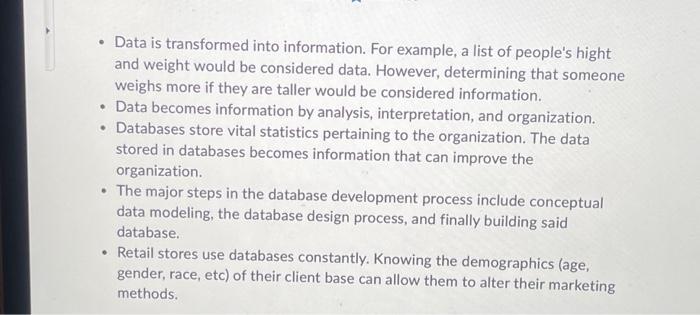
The landscape of data transformation is constantly evolving, driven by advancements in technology and the ever-increasing volume and complexity of data. Understanding these emerging trends is crucial for organizations seeking to leverage data effectively in the future. The future of data transformation will require a proactive approach to adaptation and integration of these new technologies.
The evolution of data transformation is marked by a shift from basic data warehousing to sophisticated data lakes and advanced analytical capabilities. This transition requires organizations to embrace innovative tools and techniques to unlock the full potential of their data assets. Adaptability and a forward-thinking approach are critical to navigating this evolving terrain.
Emerging Technologies
The data transformation landscape is being reshaped by several key technologies. These advancements promise to streamline data processes, enhance insights, and unlock new opportunities for businesses. These technologies include, but are not limited to, Artificial Intelligence (AI), Machine Learning (ML), and advanced analytics tools.
- Artificial Intelligence (AI): AI is revolutionizing data transformation by automating tasks, improving data quality, and enabling predictive modeling. AI algorithms can analyze vast datasets to identify patterns and insights that might be missed by traditional methods. AI-powered tools can also automatically cleanse and transform data, leading to significant efficiency gains.
- Machine Learning (ML): ML algorithms are increasingly being integrated into data transformation pipelines. These algorithms can learn from data to improve the accuracy and efficiency of transformation processes. For instance, ML models can identify anomalies in data, flag potential errors, and automate the data cleaning process.
- Cloud Computing: Cloud-based platforms offer scalability, flexibility, and cost-effectiveness for data transformation projects. Cloud environments enable organizations to store and process vast amounts of data, allowing for faster and more efficient data transformations. The cloud also facilitates collaboration and access to data from anywhere, anytime.
- Data Mesh: The data mesh architecture promotes decentralized data ownership and management, fostering a more agile and responsive approach to data transformation. This decentralized approach allows different teams to manage and transform their specific data, leading to better data governance and faster time-to-insight.
Impact on Industries
The impact of these technologies on various industries will be profound. Data transformation is not just about improving efficiency; it’s about unlocking new revenue streams and competitive advantages.
- Finance: AI and ML can be used for fraud detection, risk assessment, and personalized financial advice. Data transformation can enable financial institutions to improve customer service, streamline operations, and make more informed decisions.
- Healthcare: Data transformation can improve patient care by enabling better diagnosis, treatment planning, and personalized medicine. AI-powered tools can analyze medical images and patient data to identify patterns and improve treatment outcomes.
- Retail: Data transformation can personalize customer experiences, improve inventory management, and optimize pricing strategies. Data insights can be leveraged to predict customer behavior and tailor marketing campaigns.
Potential Benefits
The benefits of emerging technologies in data transformation are numerous. Improved efficiency, enhanced insights, and new revenue streams are just a few of the advantages.
- Increased Efficiency: Automation through AI and ML streamlines data transformation processes, reducing manual effort and human error. This leads to significant time savings and cost reductions.
- Enhanced Insights: Advanced analytics tools and techniques can extract deeper insights from data, leading to better decision-making and improved business outcomes.
- New Revenue Streams: Data-driven insights can be leveraged to create new products, services, and business models, expanding revenue opportunities.
Evolving Landscape
The data transformation landscape is dynamic, requiring organizations to adapt and innovate continuously. Data transformation is no longer a one-time project but a continuous process.
Last Recap
In conclusion, turning data into information is a multi-faceted process that requires careful consideration of data sources, quality, and transformation methods. Understanding the various tools and techniques involved is essential for successful data transformation. From practical applications to future trends, this journey from data to information empowers organizations to make data-driven decisions, leading to improved business outcomes. We’ve seen how critical this process is and how it impacts various industries.
Ultimately, mastering this process is key to unlocking the full potential of data.

